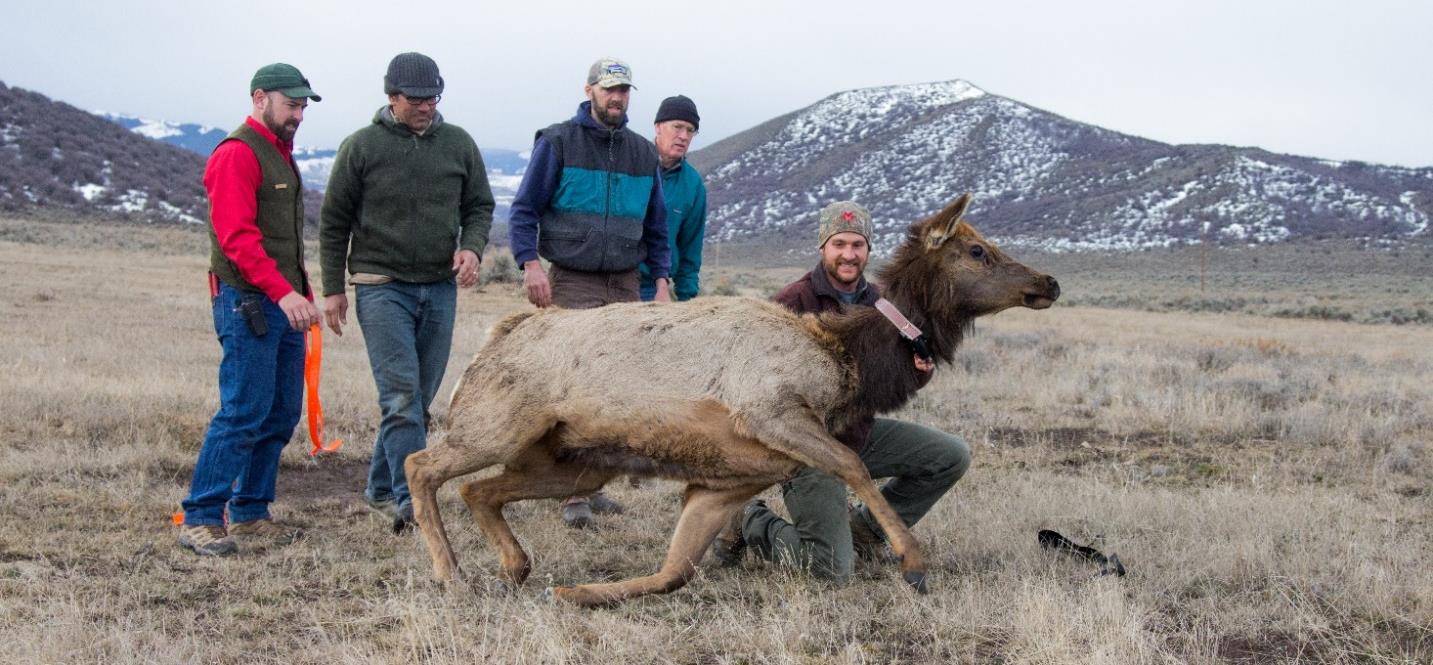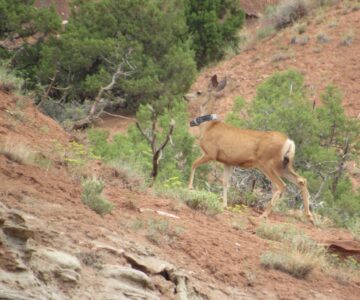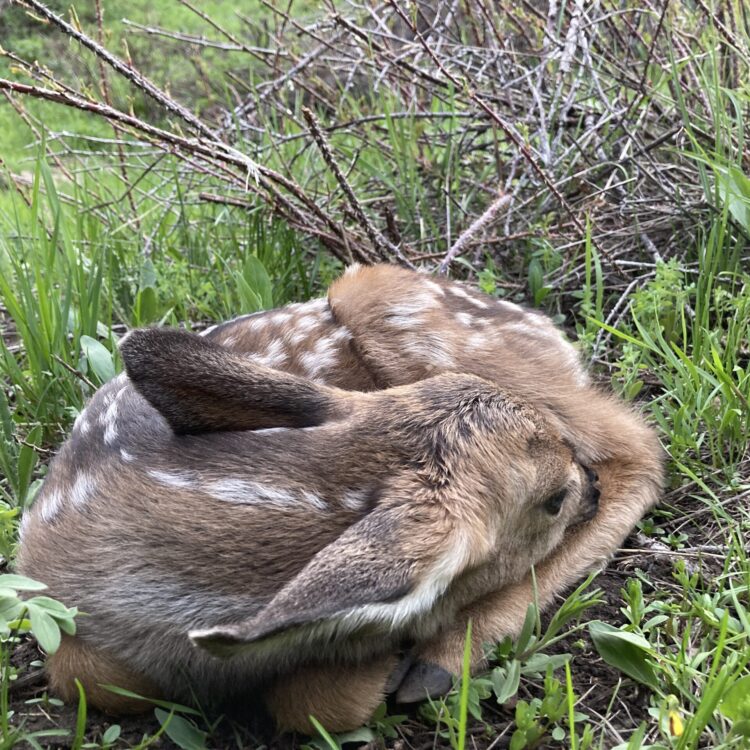
Populations of mule deer across much of the West have declined or remained relatively stagnant, while at the same time, populations of elk have increased. Several ideas have been brought to the table to explain why mule deer are doing poorly such as predation and drought, as well as disease. However, more recently, questions regarding what effects elk may have on mule deer have come to the surface. With the Deer-Elk Ecology Research (DEER) Project, we aim to identify the roles of predation, habitat conditions, and disease on survival and reproduction of mule deer in the Greater Little Mountain Area, a high-desert ecosystem of southwest Wyoming. Further, our goal is to understand if elk who occur in this same system compete with mule deer for food resources and space, and if so, how that effects population dynamics of mule deer.
We expect that predation, habitat quality, and disease all play a role in limiting mule deer in this system. However, we suspect that the presence of elk on the landscape effects how mule deer use space, which may also have implications for survival and reproduction. For instance, if elk occupy areas that are good quality habitat, and deer avoid these areas because of the presence of elk, mule deer may be forced to use low quality habitat resulting in poor nutritional condition that translates to poor survival.
This project wrapped up in 2023, and the findings are in the process of being published in peer-reviewed journals.
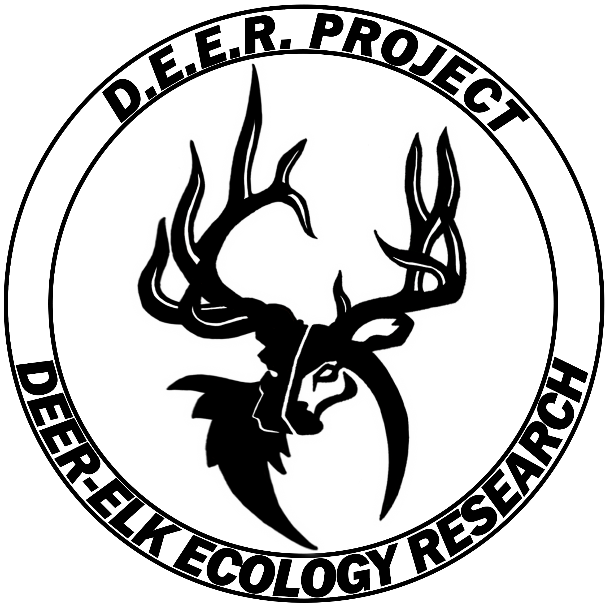
Main Findings
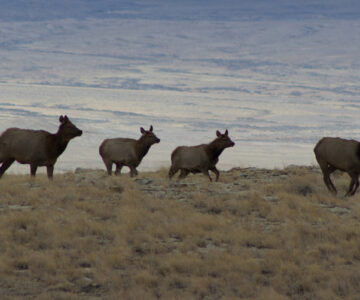
Elk and mule deer compete, affecting mule deer survival.
Female mule deer, especially those with fawns or less body fat in the spring, had a tougher time surviving because they competed with elk for food and space. This competition made it harder for deer to store enough fat to survive the winter when food is scarcer. Additionally, fawns born to mothers that were in better shape in the spring had a better chance of surviving. But, elk made it tougher for mule deer mothers to store fat during the summer, which indirectly led to more fawn deaths, as the mothers couldn’t store enough fat to take care of their young.
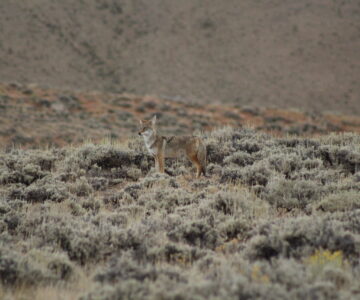
Mule deer fawn hiding behavior affects their survival.
Fawns are very susceptible to predation during the first few weeks of their life, and many of them hide to avoid detection. Whether or not a fawn hides depends on how old the fawn is, outside temperature, time of day, amount of vegetation cover, and interactions with predators. Fawns that hid were more likely to survive. Understanding encounters between predator and prey helps us to determine the actual risk that prey face when sharing habitat with predators.
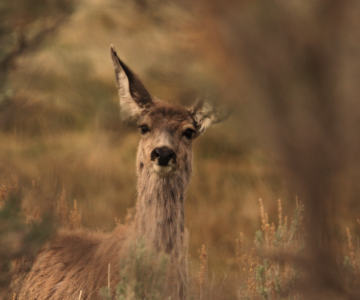
Mule deer must balance multiple sources of risk.
Mule deer live in areas that overlap with elk, mountain lions, and coyotes. Instead of changing their behavior to reduce interacting with these other species, mule deer actually move in ways that put them at higher risk of running into elk and mountain lions, and even at higher risk of being killed by mountain lions.
Communications
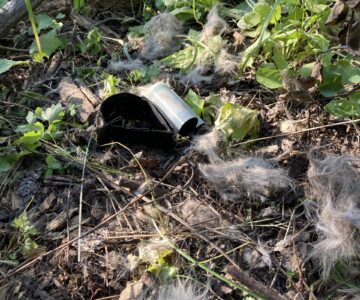
Scientific papers
“Risky business: How an herbivore navigates spatiotemporal aspects of risk from competitors and predators” by Katey S. Huggler, Joseph D. Holbrook, Matthew M. Hayes, Patrick W. Burke, Mark Zornes, Daniel J. Thompson, Justin G. Clapp, Patrick Lionberger, Miguel Valdez, Kevin L. Monteith. Published 2022 in Ecological Applications.
“Cats and dogs: a mesopredator navigating risk and reward provisioned by an apex predator” by Mitchell J. Brunet, Kevin L. Monteith, Katey S. Huggler, Justin G. Clapp, Daniel J. Thompson, Patrick W. Burke, Mark Zornes, Patrick Lionberger, Miguel Valdez, Joseph D. Holbrook. Published 2022 in Ecology and Evolution.
To see other scientific papers that have come from this research, visit our list of peer-reviewed publications.
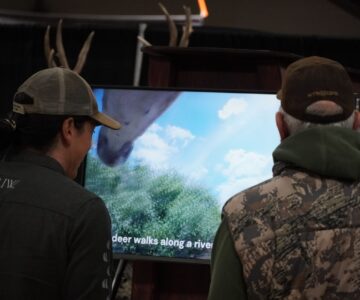
Outreach and engagement
We frequently attend sportsmen’s banquets and events, such as Mule Deer Days, to share our findings about mule deer.
Project leads
Heather Abernathy
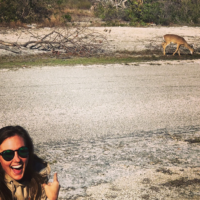
Mitch Brunet

Katey Huggler
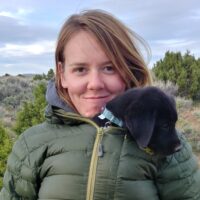
Collaborators, partners, and funders
This work would absolutely not be possible without the dedicated efforts of our collaborators, partners, and funders. We sincerely thank you all for your support of mule deer conservation. Supporters include Muley Fanatic Foundation and associated chapters (Southwest Wyoming, Central Wyoming, Upper Green Wyoming, Wyoming Range Wyoming, and Flaming Gorge Wyoming chapters), Wyoming Game and Fish Department, Bureau of Land Management, Rocky Mountain Elk Foundation, Wyoming Wildlife and Natural Resource Trust, Bowhunters of Wyoming, Safari Club International Foundation, Wyoming Governor’s Big Game License Coalition, National Science Foundation, and Wyoming Animal Damage Management Board.

